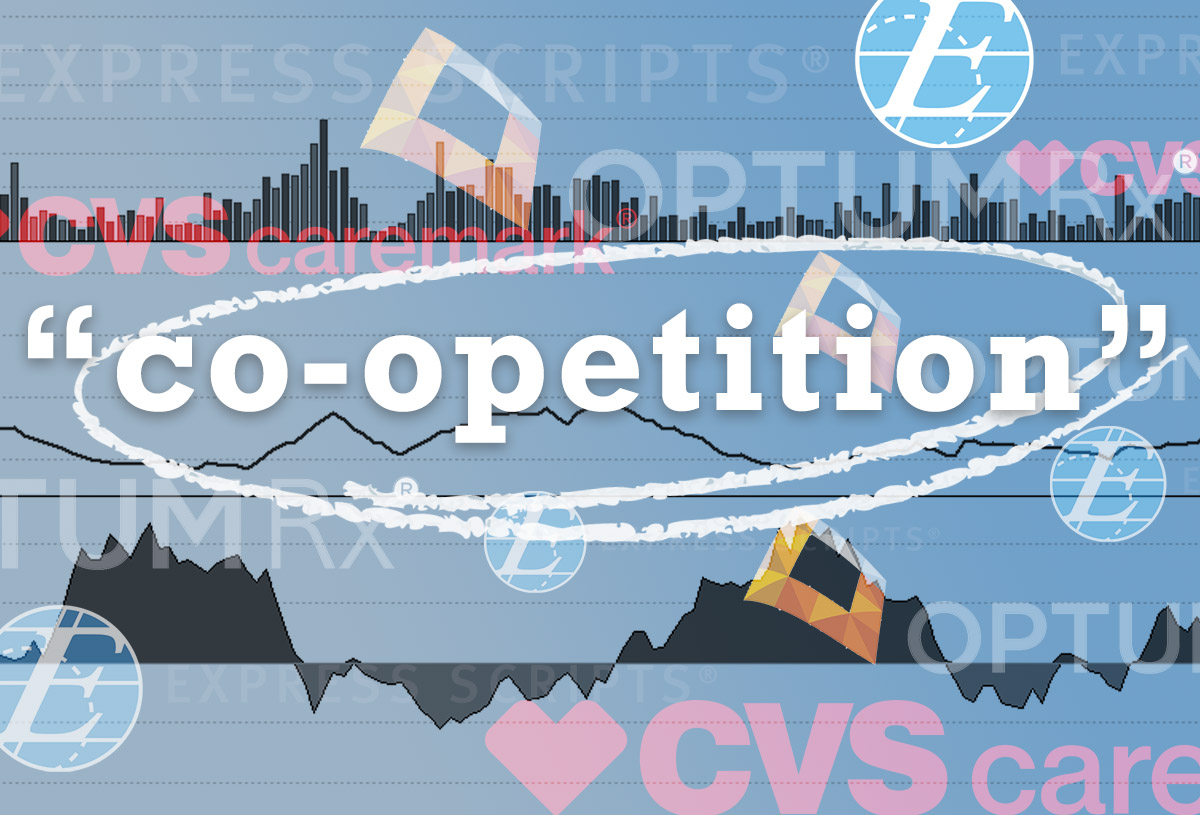Drug makers engage in ‘co-opetition’ through drug middlemen
- March 28, 2018
- By Kurt Greenbaum
- 5 minute read

Prescription drug consumers confounded by the cost of their medications can get a peek behind the curtain thanks to new Olin research into the complex “co-opetition” — cooperation and competition — among drug makers in the middleman-controlled US drug supply chain.
But, as Olin’s Panos Kouvelis explains, the system is so complex and opaque, it may be headed for government regulation.
Kouvelis’s research describes the complicated dynamics between drug manufacturers and “pharmacy benefit management” firms — massive companies like St. Louis’s Express Scripts or CVS Caremark that manage drug benefits and dispense medications for millions of patients as part of their employer-supplied healthcare coverage.
Kouvelis says his research shows that on one hand, drug makers compete with each other to build their brands and increase sales for similar medications. On the other hand, in the complicated world of PBMs, drug makers unwittingly cooperate. That’s because their price competition and volume-leveraged negotiations with the PBMs lower costs to PBM clients — employers — which increases the market for PBMs and the patients they serve, thus benefitting all drug manufacturers.
Deciphering a Complicated System
In fact, Kouvelis says the industry is destined to end up regulated by the government because the system is more opaque than almost any other supply chain. Consumers can pretty easily discern how automobile manufacturers and their suppliers make money, for example. But fewer understand how their $20 copay for anti-cholesterol medication gets split between the drug maker, the insurance company, and the pharmacy benefit manager.
“In a complex environment, we have to figure out how the prices are set when drug manufacturers work with PBMs,” said Kouvelis, director of The Boeing Center for Supply Chain Innovation and Emerson Distinguished Professor of Operations and Manufacturing Management.
“This is exactly the time that the government has to decide,” Kouvelis said, in light of the planned acquisition of Express Scripts by Cigna and the considered acquisition of Aetna by CVS. “The PBM is controlling three things: The price its clients pay, the copay patients pay, and the negotiated wholesale price charged by the manufacturer. What we’re finding out is that for a profit maximizing PBM it does make sense for some drugs, the drug cost to be actually lower than the copay.”
The research paper, entitled “Drug Pricing for Competing Pharmaceutical Manufacturers Distributing Through a Common PBM,” Kouvelis and his coauthors created a mathematical model of strategic interactions of the drug makers with the PBM. They use that model to measure the effect of the many variables at play in the system, including drug prices, tiered formularies (the list of drugs the PBM provides) with different copay levels, rebates to PBMs, demand, price sensitivity among patients, and market size.
The researchers — who included Yixuan Xiao at the City University of Hong Kong and Nan Yang at the University of Miami — used data from publicly accessible sources to test the mathematical model as much as possible. The paper has been published in the Production and Operations Management journal.
“The only thing we can calculate here are the profits of everyone in the game,” Kouvelis said. “From a competitive perspective, what is going to happen when we have rational players in it? How will drug manufacturers set prices? How will PBMs leverage their formularies for rebates and controlling costs to clients? To what extent is everyone benefitting? And who finally pays most of the drug costs?”
Turmoil in the Industry
The research is particularly timely: Express Scripts — No. 22 on the Fortune 500 with 2016 revenues of more than $100 billion — is now a merger target by insurance company Cigna. It’s the latest sign of turmoil in the industry. Express Scripts’s stock has been buffeted since its largest client, Anthem Inc., announced it would drop Express Scripts in 2020 in favor of launching its own PBM called IngenioRx.
Express Scripts is one of the three major players in the PBM industry, including OptumRx, owned by UnitedHealthcare, and CVS Caremark, which is in the process of acquiring insurer Aetna Inc.
One thing is clear from the research, Kouvelis says: PBMs seem to have very good returns on their invested capital. For one thing, they have sizable leverage over drug manufacturers through their decisions about which drugs are available through their services — the PBM’s “formulary.”
Drug makers with competing medications must therefore “play ball” with the PBMs in order to be included on the preferred tiers of the formulary, which means lower copays and a tendency to be used more often by the corporate employees who are served. Typically, PBMs have a three-tiered formulary allowing patients to pay a lower copay for generic drugs, for example, a middle-tier copay for certain “preferred” branded drugs, and a higher out-of-pocket cost for “non-preferred” medications.
The Middlemen Win
Meanwhile, PBMs earn revenues from two sides of the equation: First, from the fees their clients pay to manage their employee prescription drug plans. Second, drug manufacturers rebate a portion of their sales revenue to the PBMs for the business they receive. The PBMs often pocket much of those rebates, sharing a portion with their clients to help keep costs down for employers.
His paper describing the “co-opetition” among drug makers is Kouvelis’s second in a series of papers on pharmacy benefit managers. His first looked at how PBM clients make decisions about which middlemen to select and how that selection process drives formulary decisions and the fees competing PBMs charge for their plans.
As PBMs now merge with insurance companies, he is embarking on research to examine what that will mean for consumers and clients. His previous research substantiated why vertical integration of drug manufacturers and PBMs — which ended in the late 1980s — was not increasing social welfare.
That research also offered insights on conditions under which mergers of competing PBMs might not always translate into lower drug costs. Now, with the PBM ownership model focused on insurance companies or pharmacy chains, it is time to decipher their implications for drug prices and social welfare.
“The role of the PBM and how its ownership aligns with the overall drug supply chain is not very well understood. Other supply chains are a little more linear, a little more transparent,” Kouvelis said. “That’s what we were trying to understand in this paper — the role of the PBM in this process, how these negotiations happen among PBMs, drug manufacturers, and clients.
“Who makes most of that money in the drug supply chain? Hard to always say, but the middlemen in the industry — wholesalers, PBMs, and insurance companies — appropriate quite a lot for the investments they make in it,” Kouvelis said. “The benefits of further merging of such middlemen in an opaque supply chain are far from a no-brainer.”
Media inquiries
For assistance with media inquiries and to find faculty experts, please contact Washington University Marketing & Communications.
Monday–Friday, 8:30 to 5 p.m.
Sara Savat
Senior News Director, Business and Social Sciences
